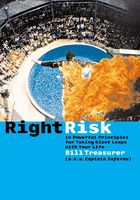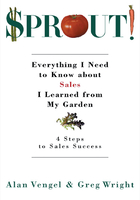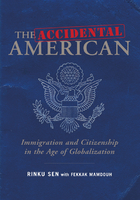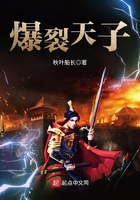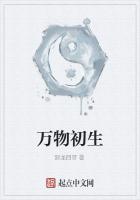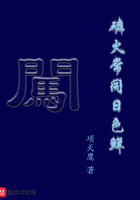Chapter I East Meets West
It was not the first time Open Space Technology was used, but it was significant nonetheless. Executives from the Taj Group of Hotels, part of the Tata family of businesses in India, had resonated positively to my 1988 paper, The Business of Business Is Learning, and decided that a conference on the subject would be beneficial. In support of that undertaking, they offered their exquisite conference center at Fort Aguada, Goa—with all expenses paid. Why we used Open Space is somewhat of a mystery, but it seemed like a good idea at the time. Subsequent experience suggests that it was probably an idea whose time had come.
Support also came from Procter and Gamble, giving birth to a second, parallel conference in Berkeley Springs, West Virginia. It, too, was conducted in Open Space and broadly expanded our emerging understanding of learning in organizations. However, since the intent of the moment is to introduce Open Space, I will leave the details of that conference for another time.
Goa is an interesting place. Located on the subcontinent of India, this tropical paradise is an ancient mix of East and West. Once a Portuguese colony, Goa officially (and forcibly) rejoined the life of the East after India's declaration of independence. There is a definite Western presence here, but it exists within the deep consciousness of Mother India.
In response to the kind invitation of the Taj Group, Indian executives, theoreticians, academics, and consultants joined their colleagues from the United States, the United Kingdom, and Europe. We had the president of a computer company, senior executives from the Indian steel industry, and two professors of management, one from London and the other from Bombay. There was even a television producer from Seattle. Fifty souls in all, they were drawn together by a common fascination with learning in organizations, and an even deeper conviction that life at the end of the twentieth, soon to be the twenty-first, century demanded incessant learning if organizations were going to survive, and hopefully prosper.
Since that time, the notion of the learning organization has become almost banal. But in those days, the concept of learning in organizations, and more especially of organizations that learn, was a new idea. To be sure, training departments abounded in all the “best” organizations, but real, deep learning of the sort that bursts paradigms and charts new courses for humanity was simply not to be found in the day-to-day life of businesses, governments, and related social institutions. Better to leave learning to the halls of academe, and never confuse it with the ongoing task of making a living.
So it was for many years. But the conflicting, not to mention catastrophic forces sweeping the planet made one thing very clear: what we took for granted yesterday is suspect today and quite likely will be “off the screen” by the end of the week. Ongoing learning, imagining and creating realities that never were, expanding our awareness of the nature of our world, all have become issues of first concern. The alternatives are not acceptable. And so we gathered in Goa.
It Was Bizarre
If the topic was esoteric, the mode of meeting was downright bizarre. In spite of the academic and executive fixation on advance agenda preparation, there was none. In fact, all we had was a theme, a starting time, and a concluding time. All the rest was open space–—to be filled with whatever meaning and intent we, the participants, might desire.
We began in a circle, all fifty of us sitting on small conference room chairs, gazing anxiously and expectantly at our colleagues, face to face. It was a pretty big circle, and it appeared even bigger than its actual physical dimensions because most of us did not know each other, except for brief biographical details that were hardly comforting. The word diverse was appropriate but did small justice to the reality. We were, quite literally, from different worlds. Held in common was a belief that doing business as we had always done business was a certain prescription for going out of business. I suppose we also shared an appreciation of high adventure, going where others had never quite gone before.
In the center of the circle were a small stack of paper, some marking pens, and a few packages of blu-tac, the European/Indian equivalent of masking tape. There was also a large, shallow beaten-copper dish, perhaps a meter across, filled with water and covered with floating flower petals arranged in a meticulously beautiful design. As we considered each other and the three days lying ahead, the openness of the circle created by our presence appeared almost as a cosmic void, a great emptiness, the battleground for mythic drama, the home of chaos. A little far out perhaps, but quite reflective of the fleeting thoughts passing through most of our minds. How on earth did we ever permit ourselves to show up under such questionable circumstances, sitting with fifty strangers, no agenda, and three days to fill?
But it was the flowers that caught our eyes and interpreted the moment. Each person, no matter where they sat, found the view filtered and informed by the exquisite loveliness of those floating petals. In the midst of chaos, there was a center point of beauty and order. Clearly, Toto, this was not Kansas.
As a convener of the group, I rose to welcome the participants. Walking slowly around the inside of the circle, I invited each of our guests to spend a moment, before the festivities began, allowing their eyes to trace the circle of their peers, acknowledging the few that they knew, and making initial contact with the strangers. By the time I had completed my circumnavigation, a surprising and unexpressed intimacy manifested in the open space, and then it was on to the business. Briskly moving to the center of the circle, I described our theme: The Business of Business Is Learning, which of course was also the title of my paper. Each person who cared to do so was invited to identify any area or issue related to our theme for which they had some genuine passion and were prepared to take personal responsibility, as in convening a session around their concern. With their issue in mind, they were to come to the center of the circle, take one of the pieces of paper, and with a marking pen, inscribe their theme on the paper, sign their name, announce their name and theme to the group, and post their paper on the wall. They were to indicate a time and a place to meet, which could be their room, by the pool, or even on the beach.
While each individual contemplated their response (or sat in still somewhat shocked silence), I proposed four principles and one law to guide our interactions with one another.
The Four Principles
Whoever comes is the right people, which reminds us that it is not how many people show up, their title or position, but rather the fact that they share, in some way, our passion, which makes all the difference, and therefore qualifies them as the “right” people.
Whatever happens is the only thing that could have, which directs our attention away from what might have been, could have been, or should have been, and anchors our regard firmly in what is—right now.
Whenever it starts is the right time, which suggests that when it comes to creative interchange and spirited inquiry, the clock is not the final arbiter. Things start when they are ready—not before and not later.
When it's over, it's over, which means just what it says. Don't waste time when the moment has passed. Move on to something useful.
The One Law
The Law of Two Feet, which might also be called the law of mobility for those who are differently abled, is pretty much what you might suspect. If at any time during the time together, anyone finds that they are neither contributing nor learning, they should use their two feet and move. Individuals alone are responsible for the quality of their experience and the giving of their gifts.
With the principles outlined and the law announced, the action could begin. Each person was invited to come forward with that which had heart and meaning for them, write it down, announce it to the group, and post it on the wall. And off we went.
To the surprise of everybody, we did just that. Normal reserve evaporated as a dozen people lay down on the floor by the flower petals, scribbling furiously, and then stood up to gain the attention of the group. When the first group finished, more came, and so it went until the wall was covered with more than enough to keep us involved and busy, not only for the three days immediately at hand, but as it has turned out, for many years to come. When at last no more items were offered, the entire group approached the wall en masse to sign up for the discussion groups that everyone wished to attend.
And what went up on the wall? An amazing array of stuff. From Prasad Kaipa, at that point dean of Apple University, we got, “What Is Learning?” Another contribution was, “Learning as Transformation,” and so it went. Scarcely an hour had passed since our start, and we were into the thick of things. Groups were forming in their designated places, discussions of great intensity were breaking out all over. Somehow, someway, the great void of the open space that separated us had been crossed.
The day passed with group following group, lapping and overlapping each other. Discussions begun in one place continued on the way to another, and by evening when we assembled for what we called Evening News, it was one tired but very alive assemblage of people. Apparently without trying, and almost invisibly, the bonds of community formed. Strangers became acquaintances and then fellow travelers on a marvelous journey of exploration.
On the morning of the second day, we met briefly to adjust our agenda, adding items that had popped up in the discussions and taking some items down when the proposers felt the areas had already been covered.
The Impact of Honesty
But just as we were about to depart for another full day of discussions, one of our number spoke up. Very directly and with great feeling, Prasad Kaipa said what in any other circumstance would have been unsayable, and indeed unthinkable. “I have learned nothing! It is true that we have had great conversation, and the erudition is immense, but it is conversation I have heard before. I've been there and done that, and I don't need to do it again. Unless we can get beyond where we have all been, the journey will have been wasted.”
Silence. But not shocked silence. We all agreed. There had indeed been great conversation, but most, if not all, had dealt with the known, the experienced, what the “literature” said. There had been a great deal of “head” talk, but somehow the heart was missing. In a word, we had been playing it safe.
Had this been any other conference, the silence would have been shocked, followed by a hasty call to the planning committee for an instant session of blame fixing and conference redesign. But we were the planning committee, and it was quite clear where the responsibility lay. Following a brief discussion, it was apparent to all that the fault lay not with the topics on the wall, but rather with our collective willingness to dig deeply. And after all, there is not much point in talking about that sort of stuff. You just do it. And so we did.
It is a little hard to describe what happened next. It had much more to do with the quality of feelings and the intensity of conversation than any obvious substantive output, although there was substantive output in abundance. The focus continued on issues such as, “What Is Learning?” combined with the elaboration of concrete approaches to the creation of organizational environments in which genuine learning could take place. But it was all somehow deeper, richer, riskier, and definitely “out there.”
Breaking Through
Something of the flavor may be savored in an emergent theme that, curiously enough, crossed several groups and quite literally swirled about the total environment. Learning is the evolution of consciousness, and the function of organizations is to create the environment in which such evolution might take place.
The phrase “evolution of human consciousness” is not found in the majority of business texts, and the suggestion that organizations, specifically businesses, should have any obligation to foster such a thing may appear to some as odd. But that is precisely what fifty consultants, management professors, and senior executives found themselves immersed in. Beneath the practical details of everyday organizational experience, there exists a deeper reality—the human Spirit—what some might call consciousness. That Spirit gives life to the organization; therefore, the growth of the organization requires the growth of Spirit, or the evolution of consciousness, which might be considered the essence of learning. At least that was the idea.
Where it all began is hard to say, and a truthful answer might well be: everywhere and nowhere. Fertile soil was doubtless provided by the hugely divergent experiences and cultures of the participants, an astonishing blend of East and West. But East and West have met before, and more often than not, the result has been assimilation of one to the other. Western rationalism and practicality dominate the Eastern depths, or the reverse occurs and the West disappears in a miasma of Eastern nothingness. But something new was manifest: neither one nor the other, and also not the lowest common denominator of the two.
One conversation sticks in my mind as a representative point of genesis. A very senior Indian executive, Jagdish Parikh, started to play with the notion of a business yoga, somehow uniting the ancient spiritual practices that lie at the core of the Indian experience with the hard practicalities of his business world. Location of the precise point of genesis, in fact, makes little difference, for what began as a wisp of an idea quickly assumed the power of a rolling wave, passing through groups and uniting all in a common flow of energy.
The effect was contagious; for as the sense of flow intensified, two apparently opposite entities, the individual and the collective, gathered strength, focus, and direction.
Those of us who reside in the West generally hold that the individual is supreme, and as power rises with the collective, the individual is at risk. Stereotypically, the East holds exactly the opposite point of view: maximize the individual and the collective is at risk. The experience in Goa would confirm neither.
As a Westerner, I found my awareness of the collective's power becoming a matter of almost morbid fascination. I was enthralled with the incredible sense of unity with folks known to me for only a very short period of time, and positively terrified that my uniqueness would be swallowed whole. But each time I was sure my individuality would be sacrificed it reemerged again—whole, new, and more powerful. Truly a learning experience. One might even say transformational.
Results?
Three and one-half days from the start, our conference was over. It would be reasonable to ask what had happened, and what did it all mean anyhow? An immediate answer would be that each one of us was profoundly aware that something of significance had occurred. We had done what we all knew, or suspected, at the start to be impossible. Fifty powerful individuals from multiple cultures and places had self-organized a three-day gathering concerned with hugely complex and emotion-laden issues. There had been no prior agenda-setting, no planning committee, no cadre of facilitators, no angry walkouts. Conflict, discomfort, and confrontation, although certainly present, had always led to deeper insights and understandings. In a word, it had felt good. Better than good, it had been fun in the deepest sense. There had been a reverent playfulness that honored the unique contribution of every participant, respecting the differences and somehow driving to the depths (heights?) of an extraordinary human experience full of learning and joy.
I suppose that sort of experience, in and of itself, might be sufficient justification for the event, but there was more. And with each passing year, the dimensions of that “more” seem only to expand. One of the curious aftershocks of the gathering has been the fact that the vast majority (indeed, maybe even the totality) of the participants are now doing something significantly different from what they were doing at the time. The shifts range from totally new life works to interior shifts of personal vision and self-understanding, which have vested everyday activities with radically different motivation and rationale.
It is an interesting chicken and egg question. Did the participants self-select because they were on the verge of fundamental transition, or did the gathering itself initiate these transitions? The question is unanswerable, but it is also probably moot in as much as the consensus appears to be that whether causative or coincidental, the shifts took place close on the heels of the event. Indeed, some even had a clear view of where the shift would lead them prior to our departure from Goa.
On a more substantive level, the discussions begun at Goa have been generative of a veritable tidal wave of literary production. Frankly, I have rather lost count, but my best recollection is that something like fifteen books subsequently emerged from the experience.
The conference itself has now become a regular repeat performance in India. The specific theme shifts from year to year, but many of the fundamentals remain, particularly around the understanding of learning at deeper levels. Never far from the surface is also an interest in what might now be called Indian management. We have all heard about Japanese management, American management, and European management, but the unique contributions of India are now coming into view. As some of us from the West put it in the course of our discussions, “What are the special insights regarding the human condition and organizational performance that may be gleaned from five thousand years of Indian tradition?” Clearly a lot of folks have been thinking a lot of things for a long time. What can we all learn from that?
And Prasad? What happened to Prasad Kaipa? Upon returning to the United States, he left his position at Apple Computer to engage full-time in a pursuit of a deeper understanding of learning. He consults with a broad range of American and Indian corporations, and even uses Open Space in his practice. Best of all, he remains a close colleague and friend of mine.
In terms of our present story, the Goa experience was a clear start point in the use of Open Space globally. What had begun as a novel and untried approach to conference planning has assumed, much to my surprise, a powerful presence in the unending search for better ways to enhance the quality and productivity of the human endeavor. Obviously there was much to learn, and in fact we have been learning much ever since. There was, however, a new kid on the block.
All About Now
But who is that kid? What is the story? With the wisdom of hindsight, and no little subsequent reflection, it seems to me that it is all about Now, and more specifically, about expanding Now.
Just think about it: all we really have is Now. We acknowledge that the past is over and the future hasn't happened yet. We live Now. It is really quite simple. But how long is Now? This year? This month? Today? This instant? Looked at one way, Now vanishes into a nanosecond. Look again, and everything is Now, for neither the past nor the future truly exist, or so we say. It almost seems like we have a choice in the matter, and Now can be any size we want.
But why would anybody care? At one level, I suppose, contemplating the extent of Now is rather like asking how many angels dance on the head of a pin: interesting thought but scarcely of great utility. Still, every single one of us plants our feet firmly in the here and now. Furthermore, we never seem to have enough Now. What would be different about having a big Now? Or a little one? A lot, I think.
As a matter of fact, I believe most folks have tiny little Nows. They live in this instant only, and this instant is a very small one. The past is racing forward to gobble it up, and the future intrudes to hem it in. And when your Now is very small, everything with any kind of meaning is quickly pushed into the past, where it can be reached only by memory, usually with regret. Or it resides in the future, accessible only through hope accompanied by anxiety. We are left with precious little, save our anxious memories and fearful expectations. Not a happy place to be.
Individuals are not the only creatures with restricted Nows. Corporations and social institutions seem to suffer from a similar malady. It is called concentration on short-term results and fixation on the next quarter's numbers. Other signs of a tiny Now are inability to see the big picture and myopia in terms of new opportunities that may lie just outside what we are currently doing.
Perhaps the most unnerving symptom of a restricted Now is the anxiety-provoking rat race of trying to fit everything in. After all, when we live within a tiny Now, the events of our lives race by the narrow slit of our vision at a mind-numbing pace—out of the future and into the past in the blink of an eye. It's enough to stress out anyone.
What we need is a bigger Now. When we have a broader vista and a wider perspective, the race of events from the future to the past slows to a manageable rate. The window of opportunity expands considerably.
Expanding our Now is what Open Space is all about. At least that was the learning of Goa, which has been constantly confirmed in the succeeding years. We began by sitting in a circle confronting strangers, separated by a vast (or so it seemed) stretch of nothingness, which was mirrored by the equivalent blankness of our agenda. There was a theme, and supposedly we knew why we were there, and maybe we knew a little bit about where we might be going. But none of us, absolutely none of us, had even the smallest appreciation for the distance we would travel or the magnitude of the realities we would collectively bring into the arena of our awareness.
The experience of Open Space in Goa was the experience of a constantly expanding circle, of including more and more in our consciousness—more people, more cultures, more traditions. Stimulating gifts from five thousand years of human enterprise filled our Now to overflowing. Many, perhaps most of us, started with a very limited view of what learning was all about, derived from our experience at school or in the corporate training department. We even thought we knew what we were doing and what ought to be done. Were we ever wrong! We didn't know the half of it. But things changed in a hurry, and definitely for the better. That is the story of Goa, and it appears to be the continuing story of Open Space.
Not all of the Open Space happenings are as esoteric or exotic as Goa, but they do manifest common features. Diverse people facing complex issues, for whom conflict is a present reality or a real possibility, nevertheless manage to achieve quite uncommon results—quickly and with a sense of pride. As a bonus, there is usually a profound sense of playfulness and joy. Best of all, Now expands, and then continues to expand.
The expanding Now, the story of Open Space, is what I propose to explore in the following pages—not exhaustively, but hopefully with sufficient detail to intrigue you into further exploration on your own. We will consider how Open Space evolved (chapter 2) and the experience to date (chapter 3). Then it will be on to the more interesting (to me) questions of why it works (chapters 4 through 6) and where we might be headed next (chapter 7). The final chapter attempts to pull all the pieces together, more or less.
I make no pretense to have all the answers, but I do intend to share my experience, recognizing that others may, and indeed do, have a different experience. If this book works, you will be persuaded to develop your own experience.



